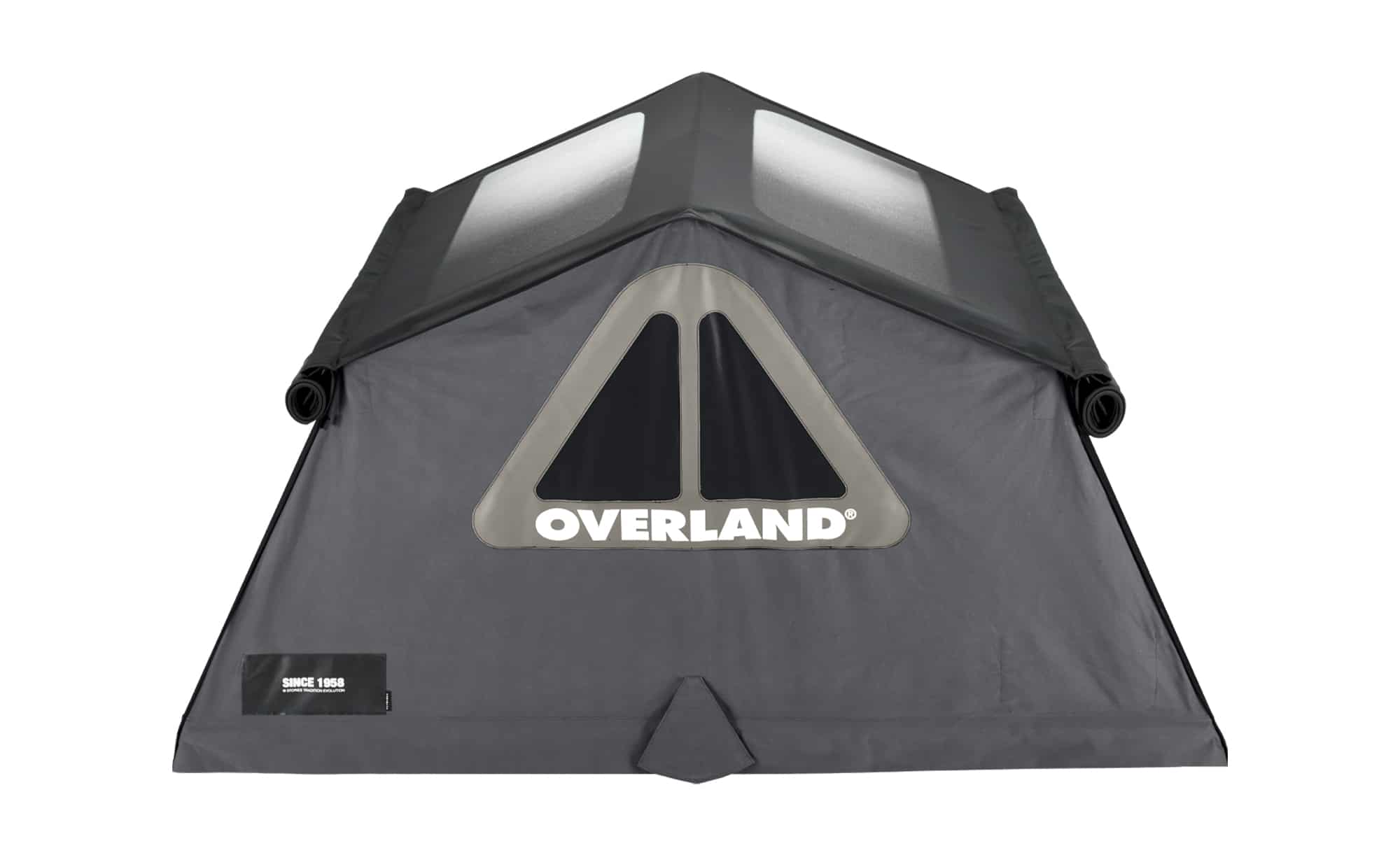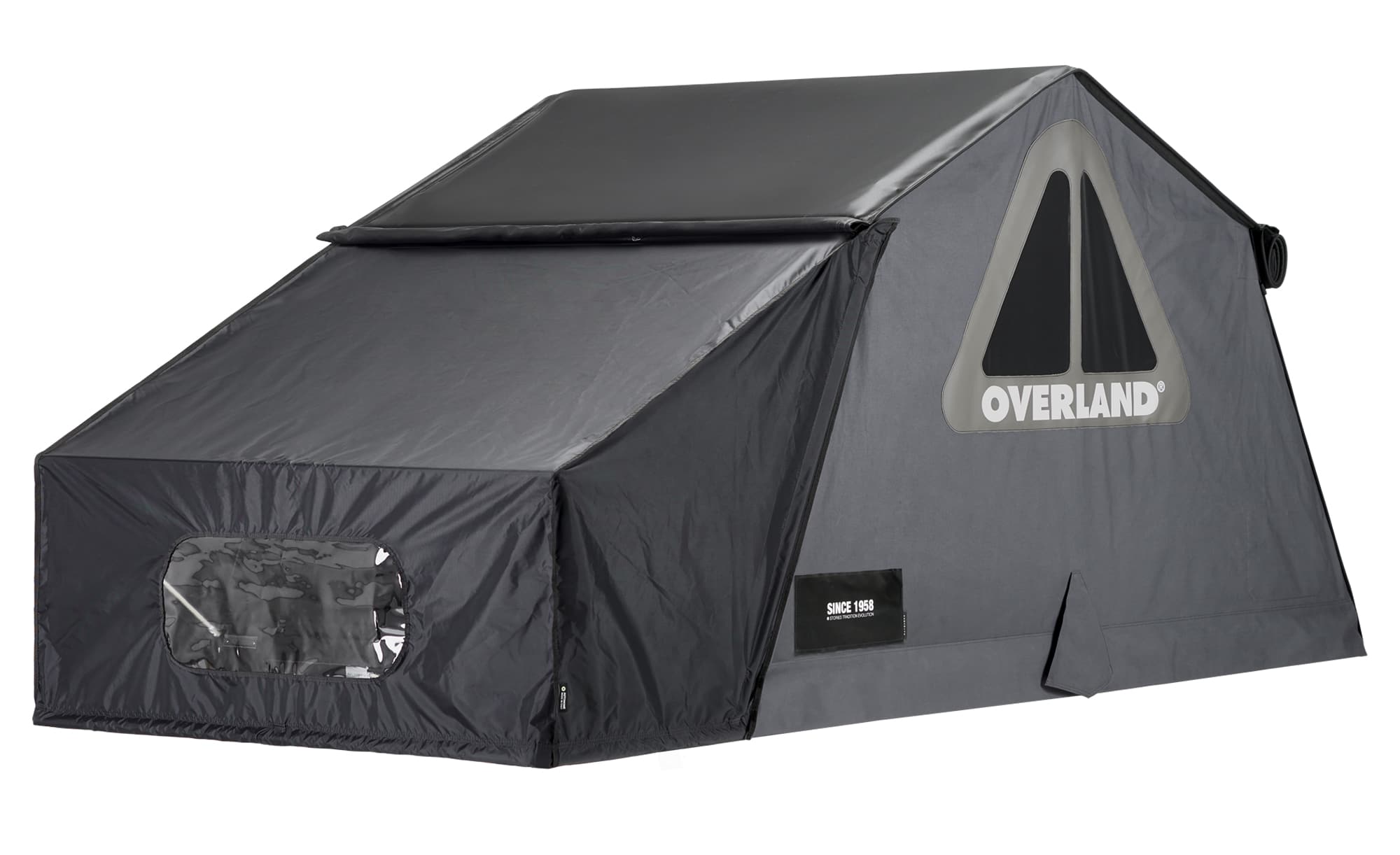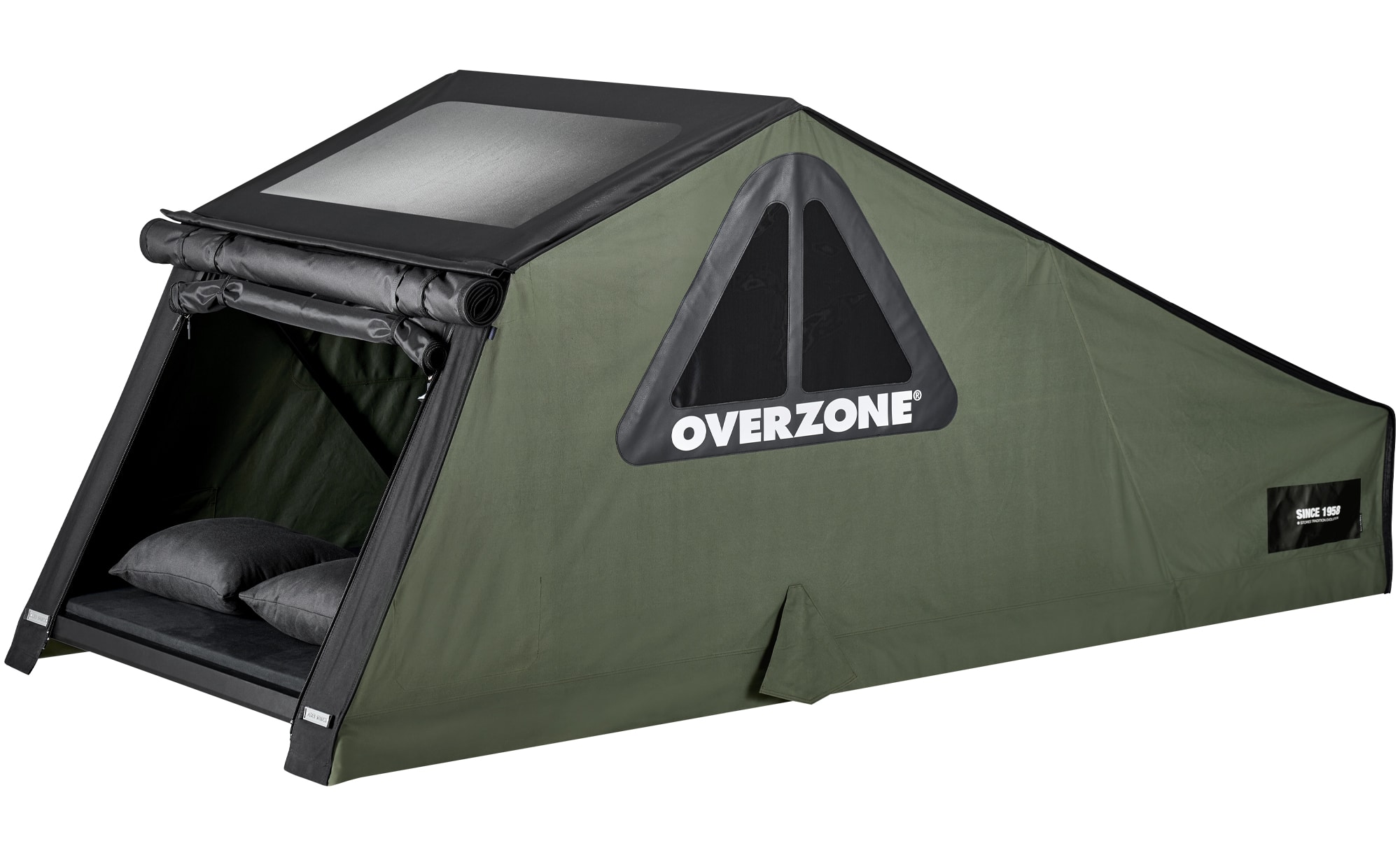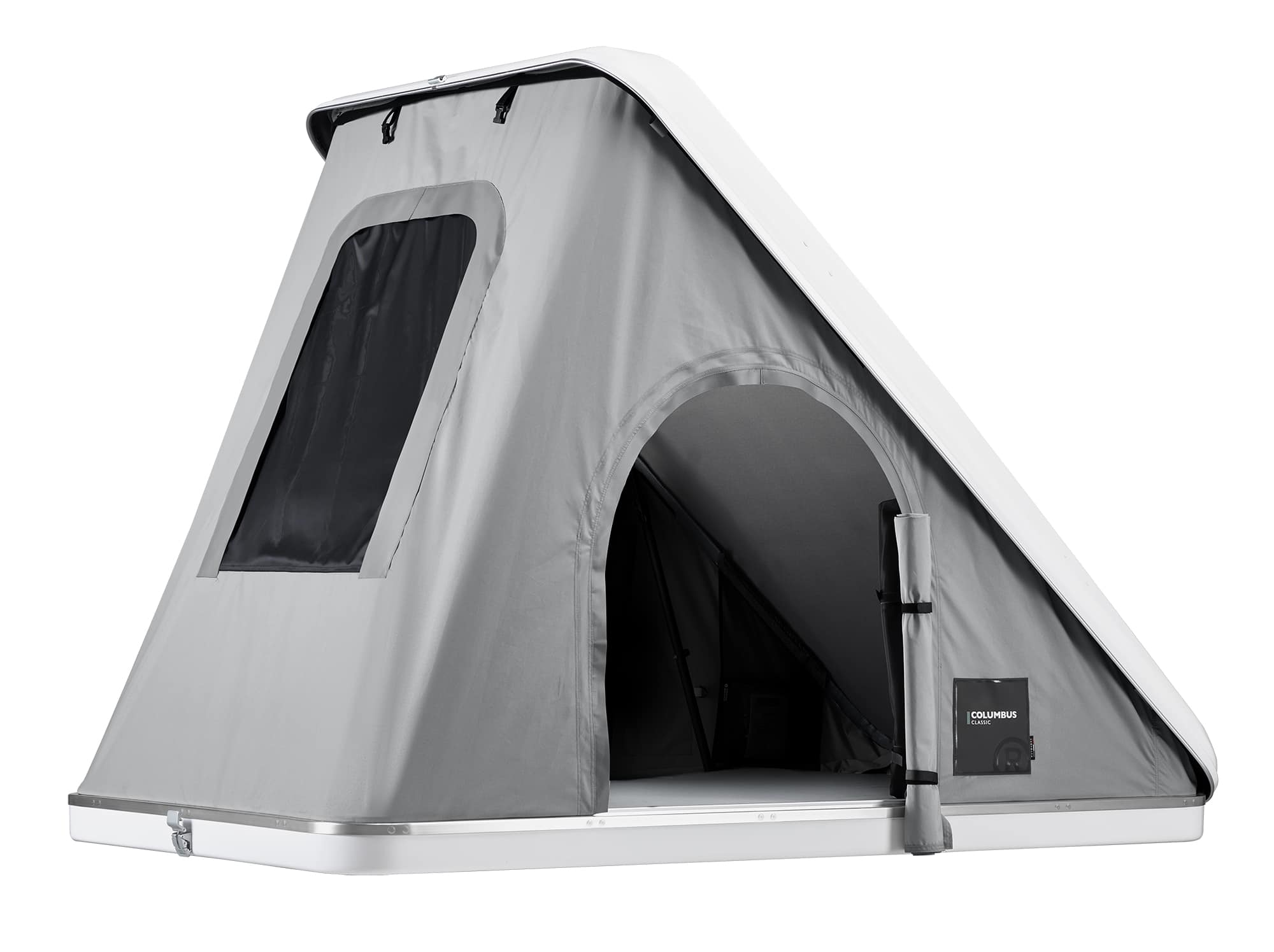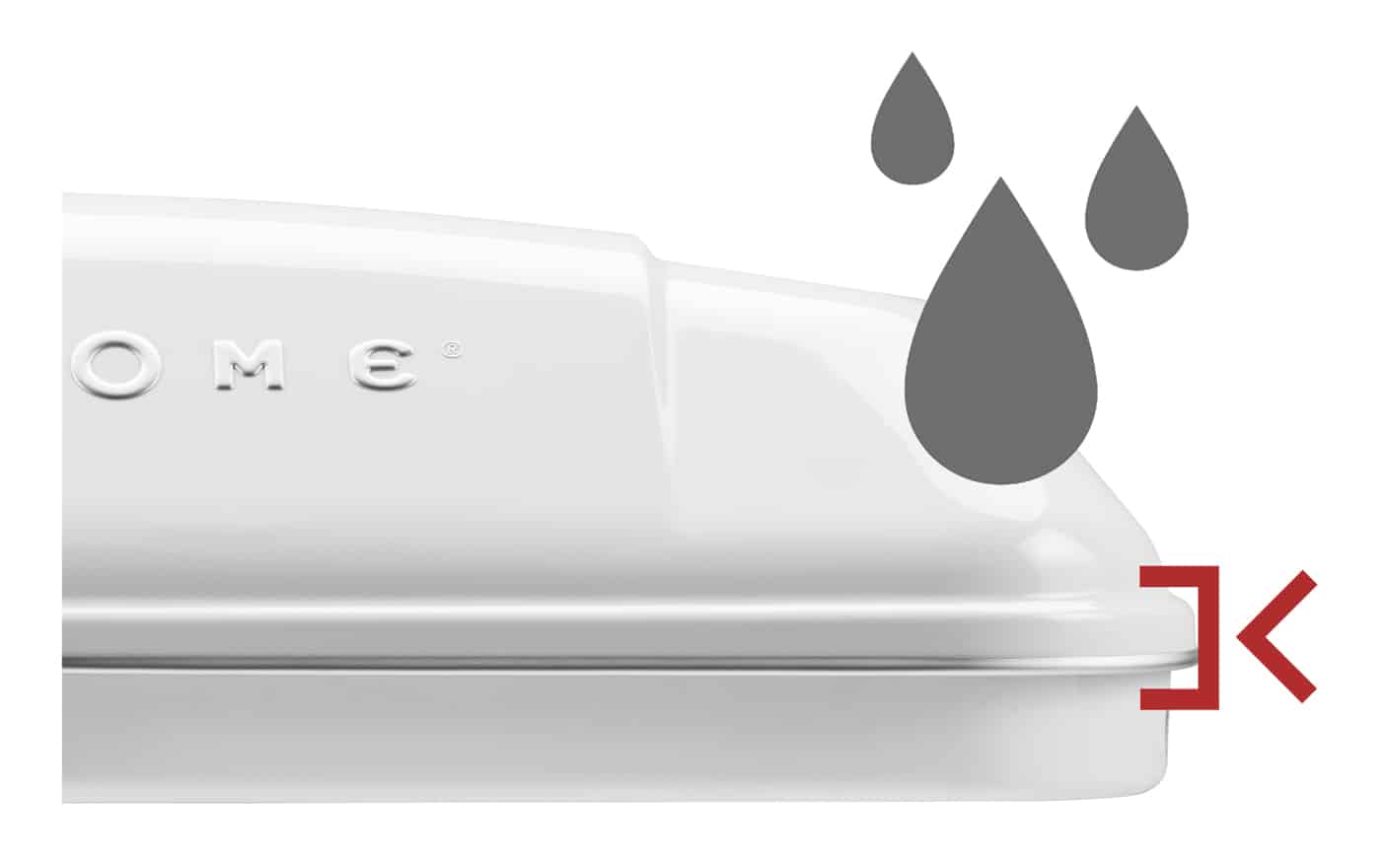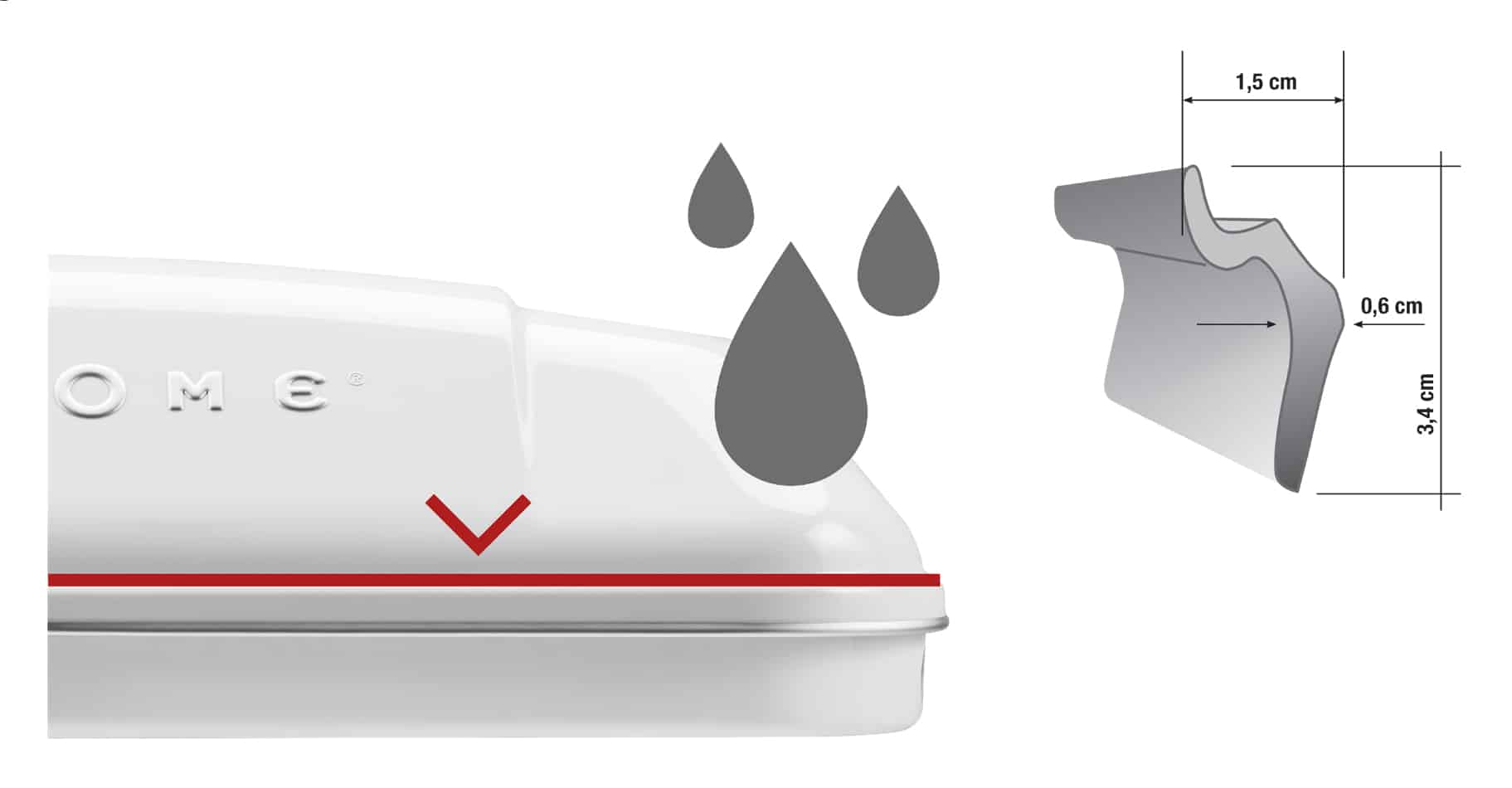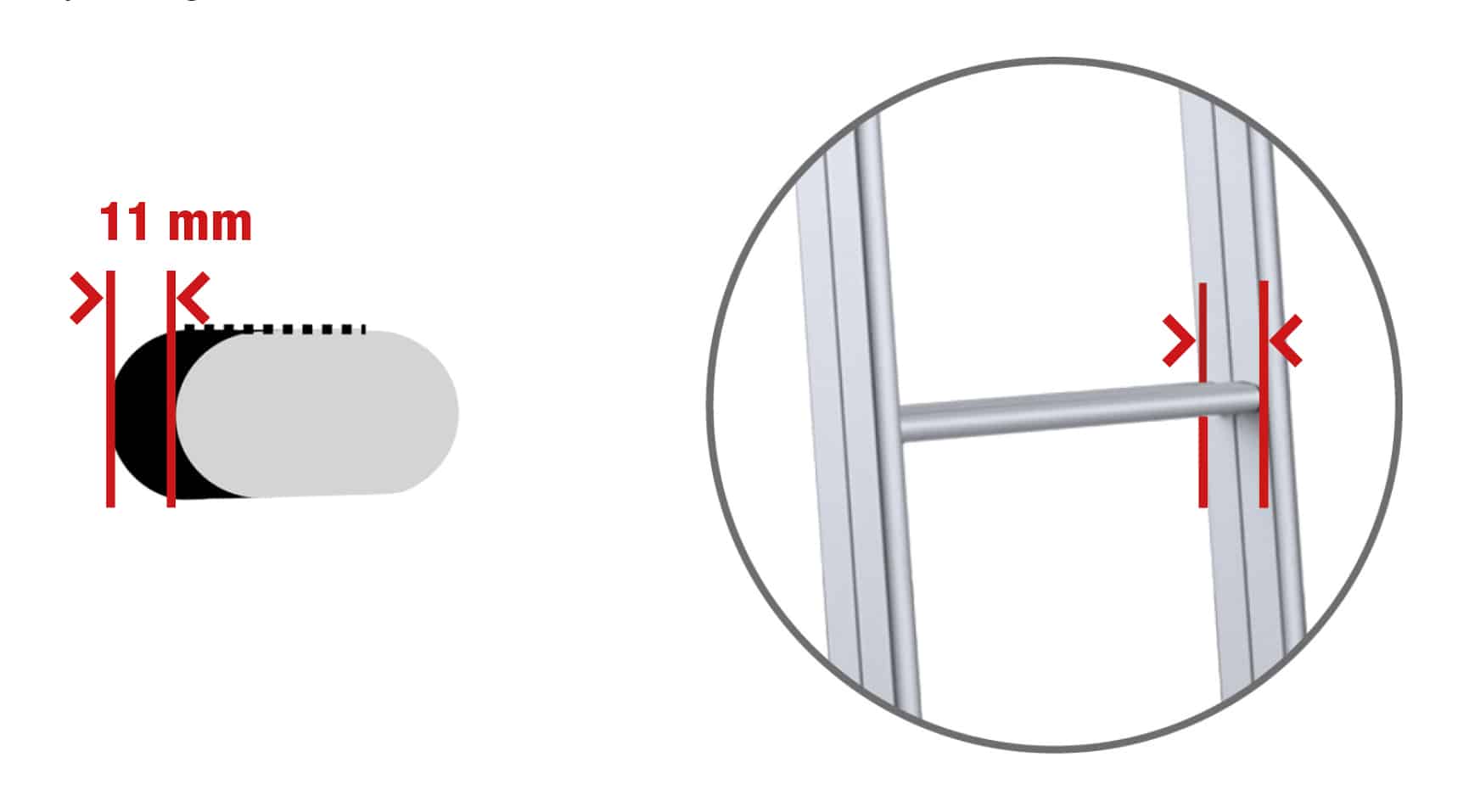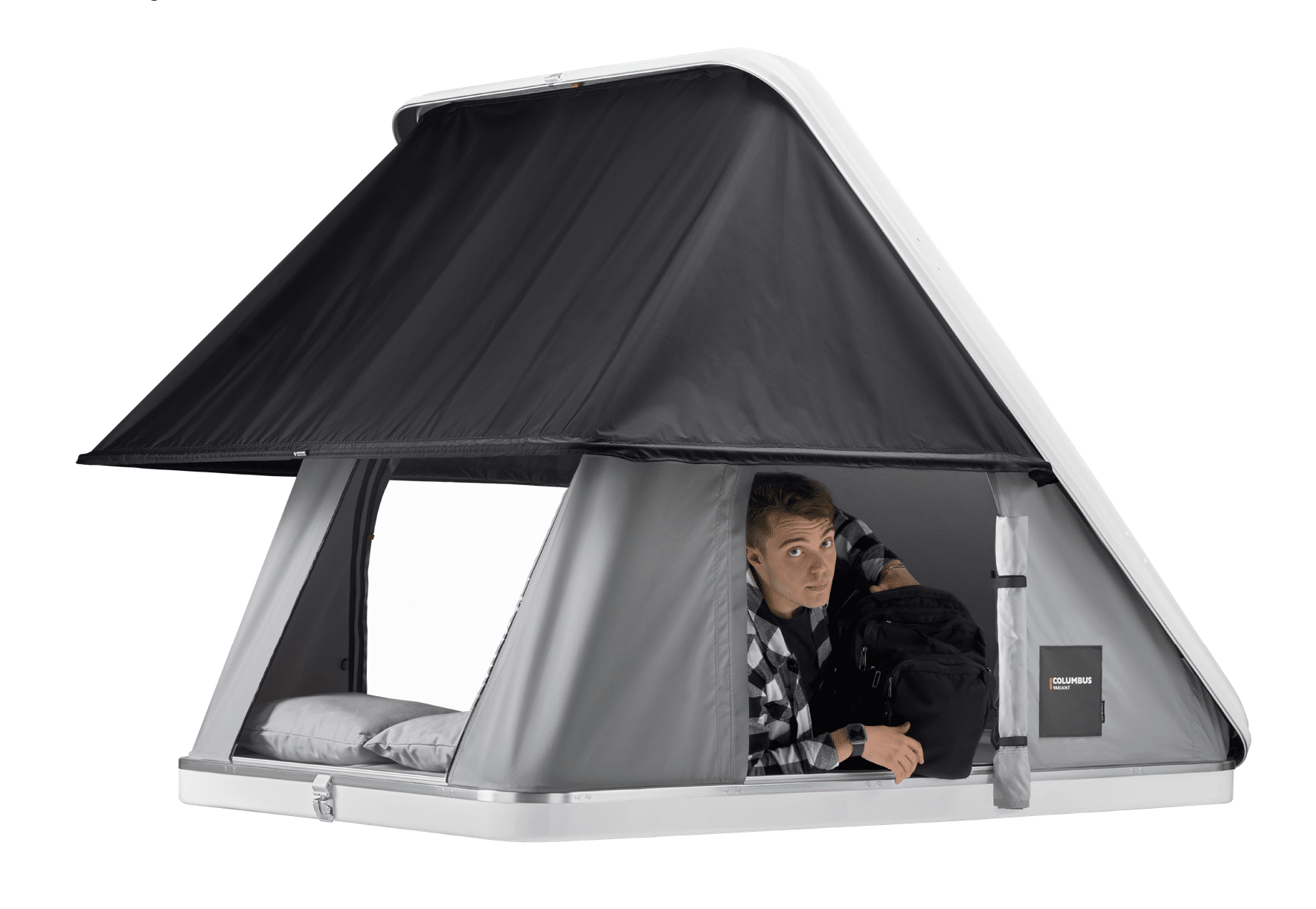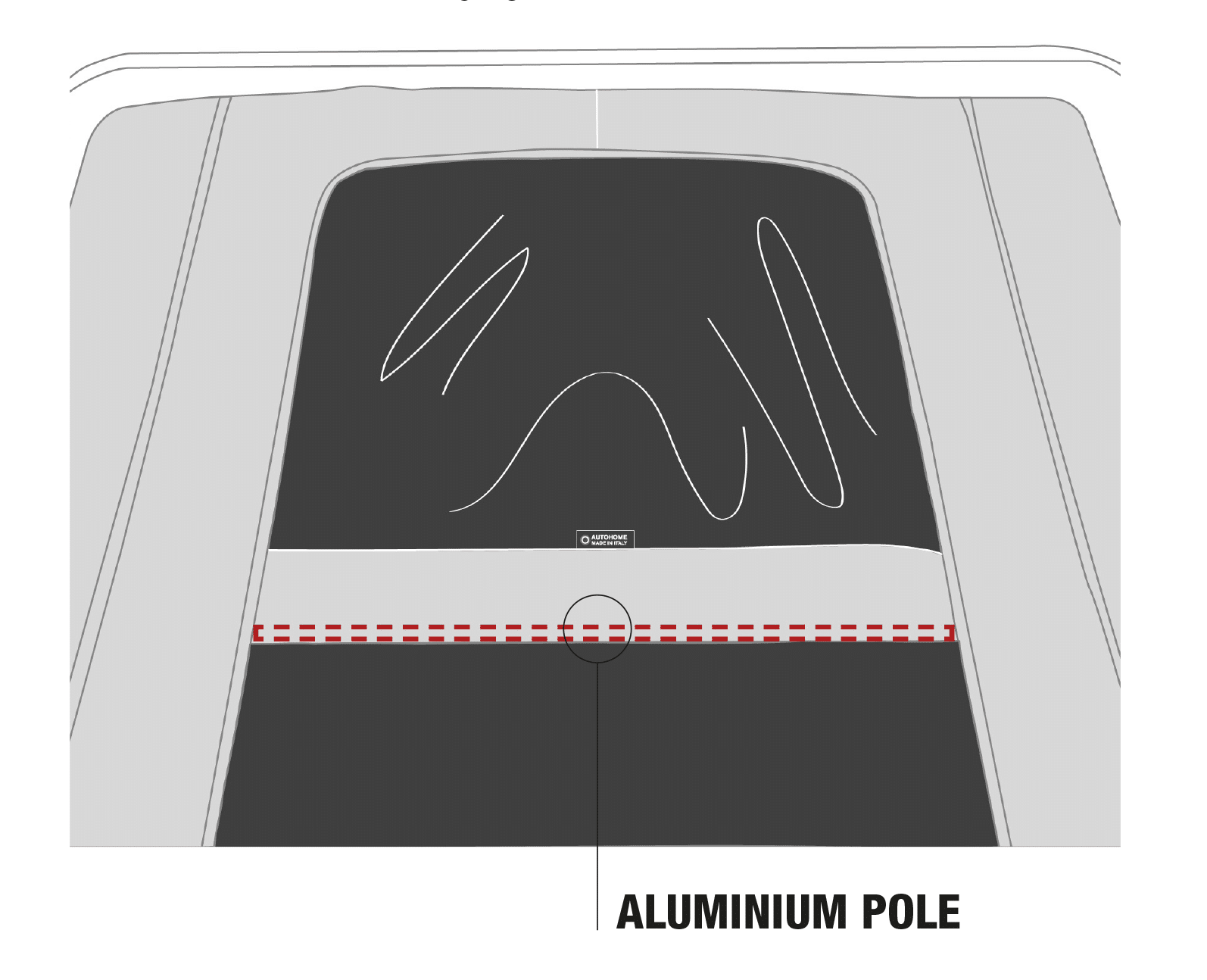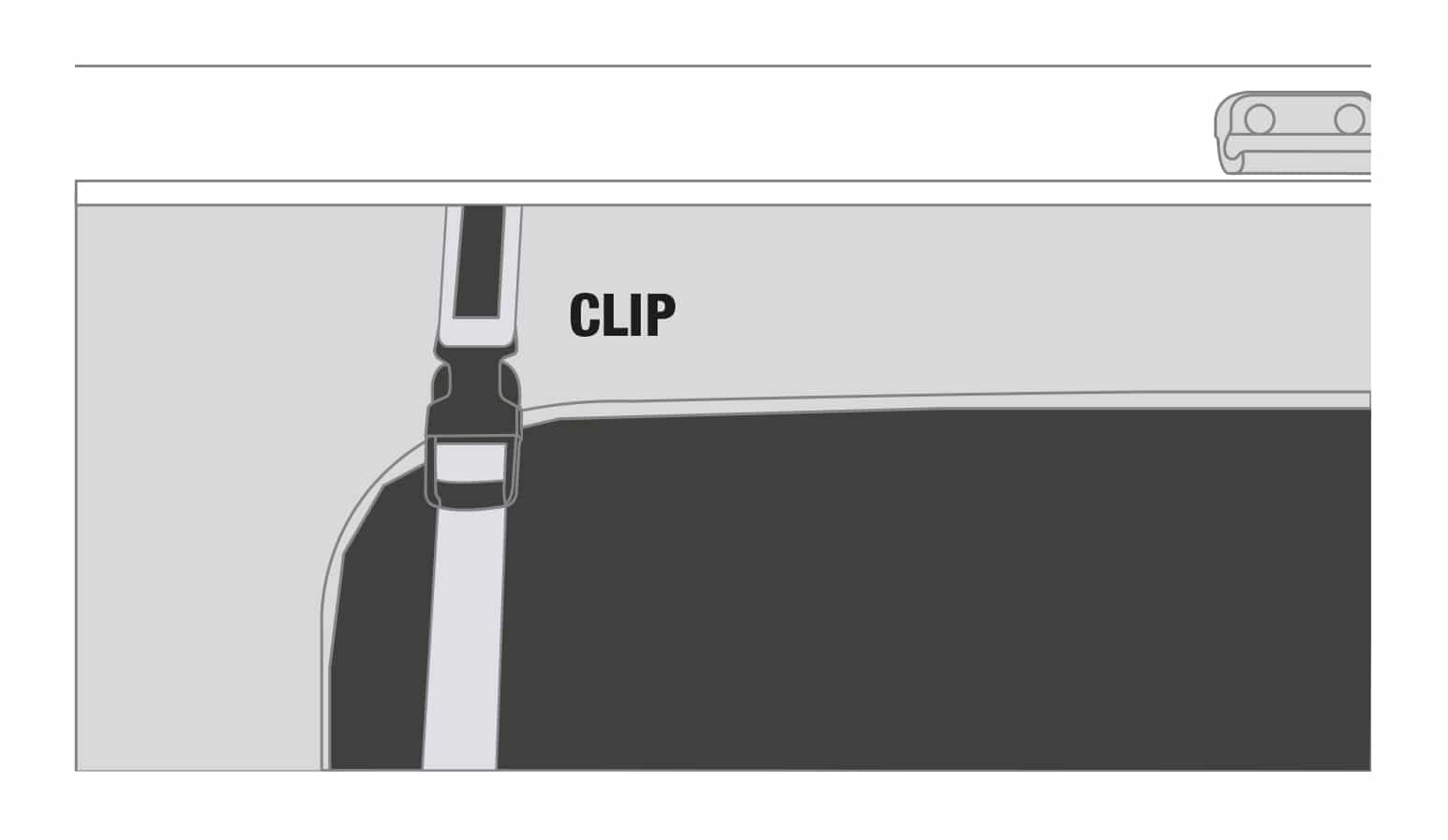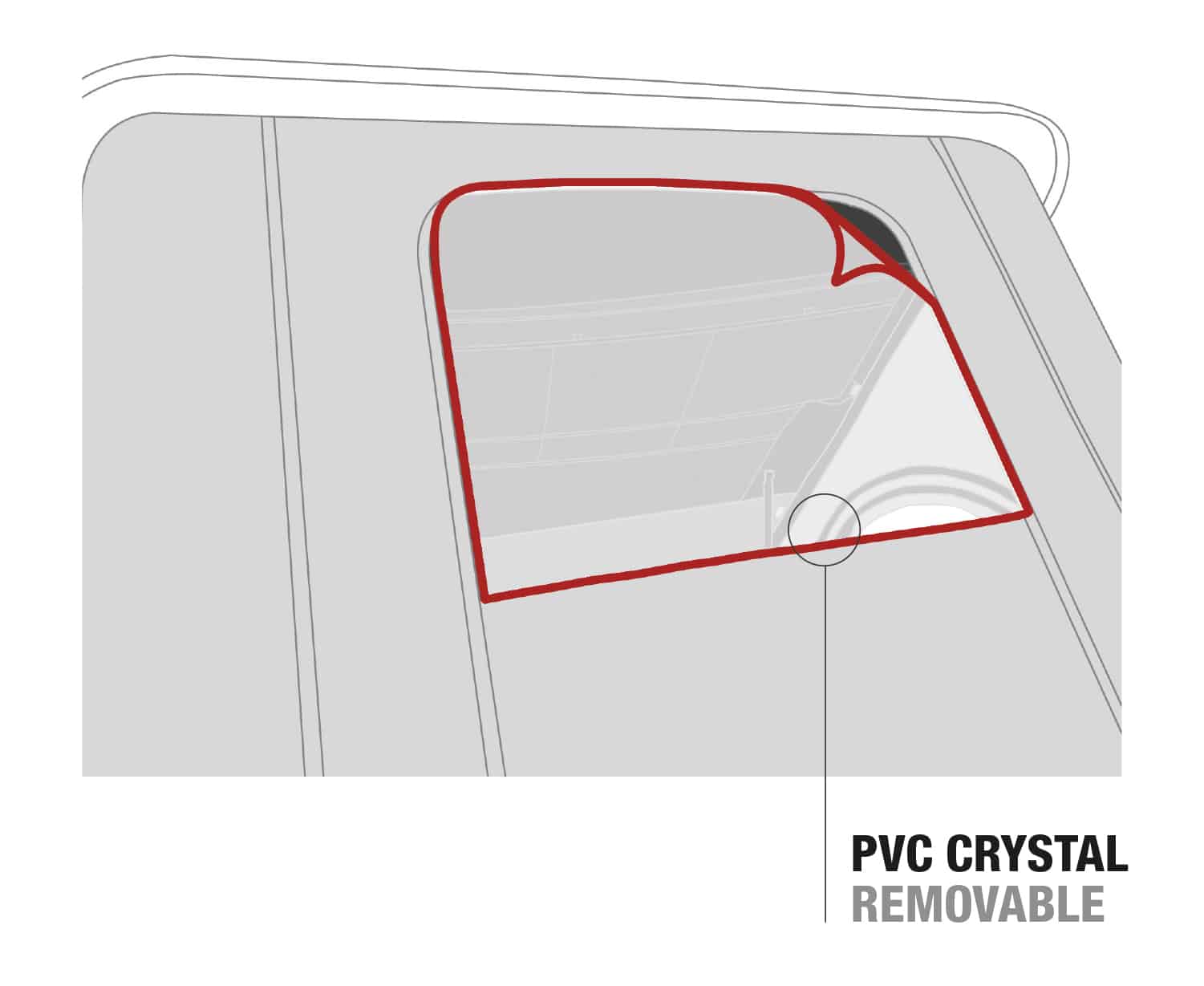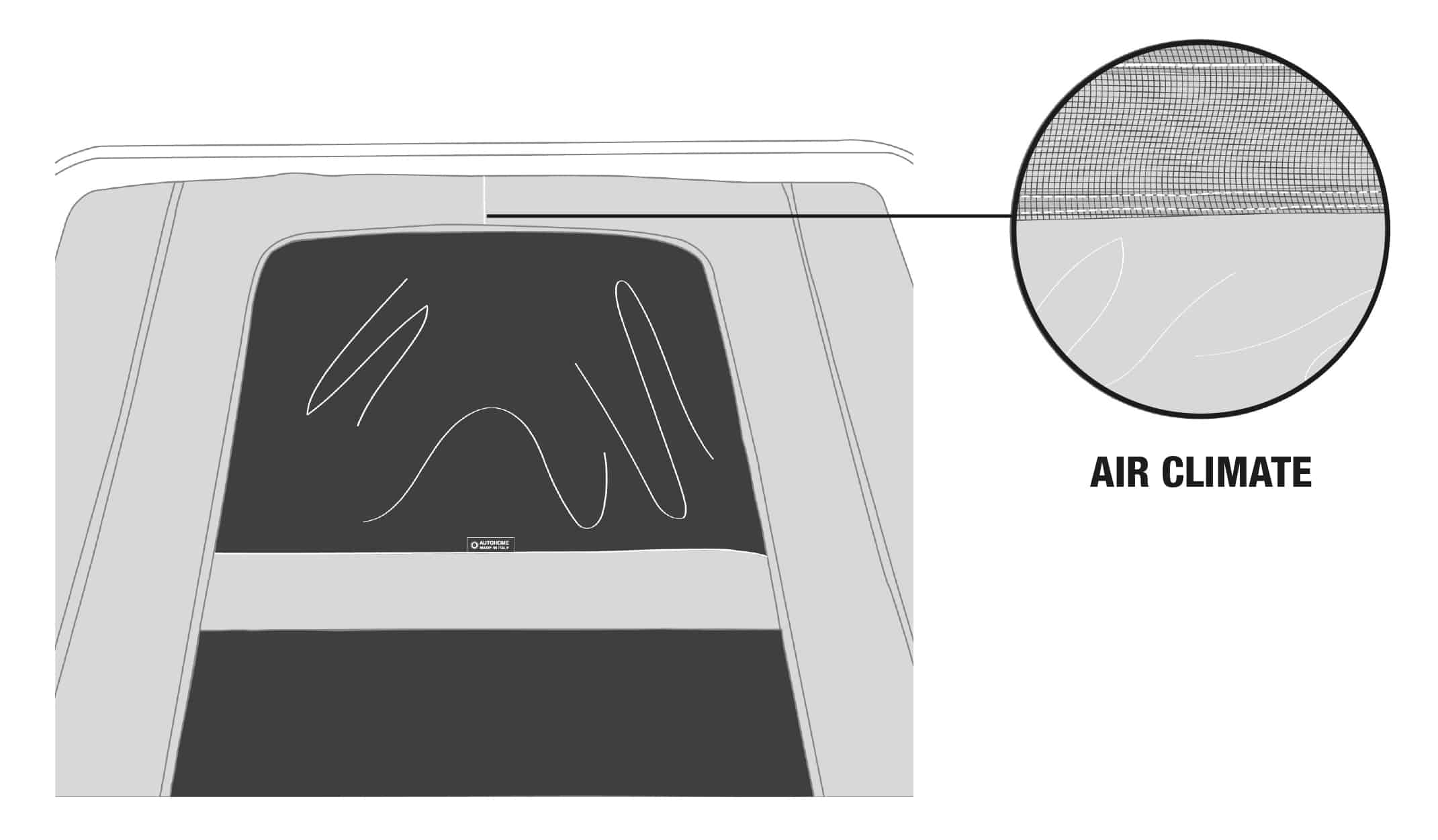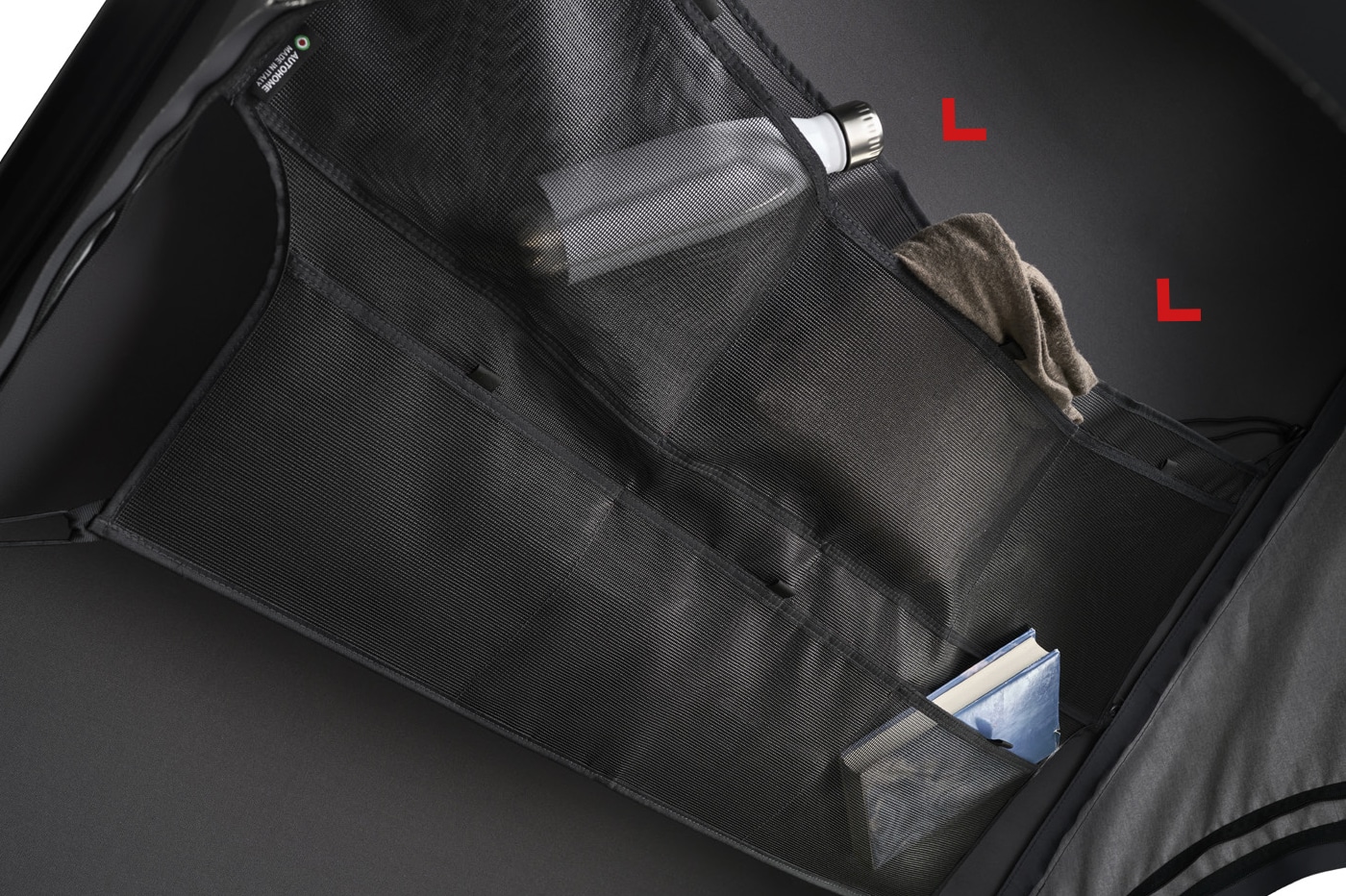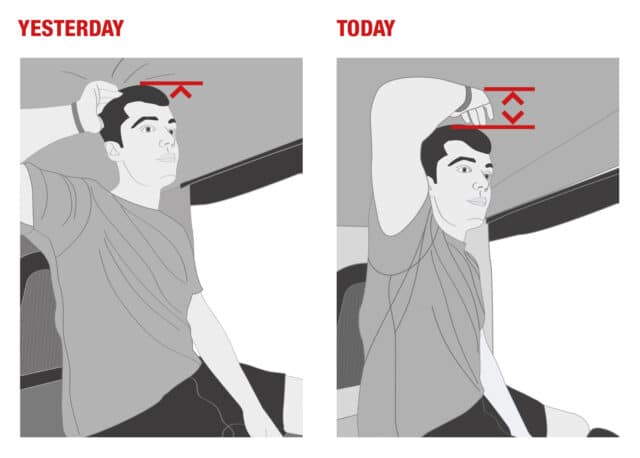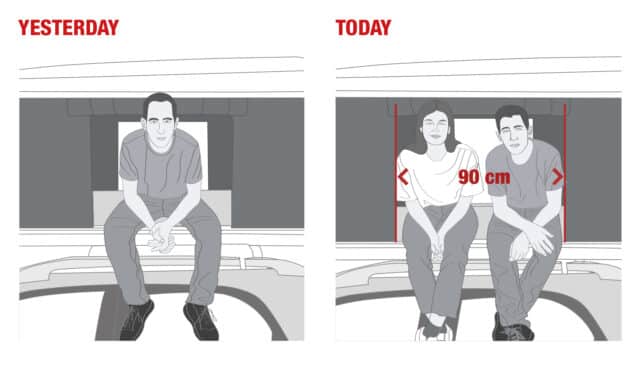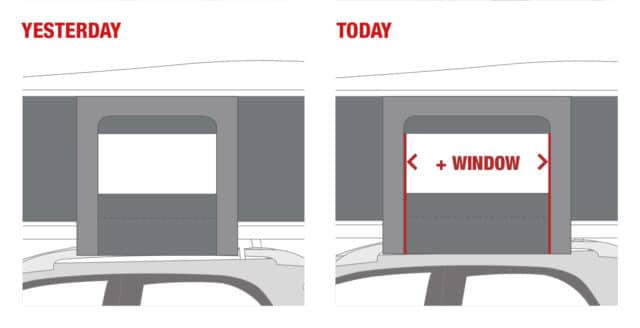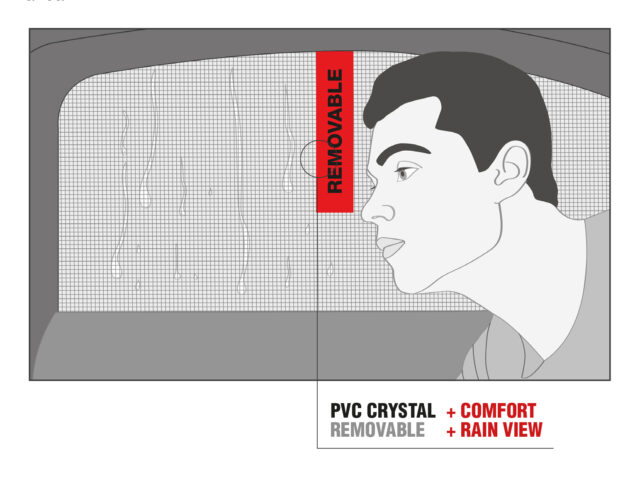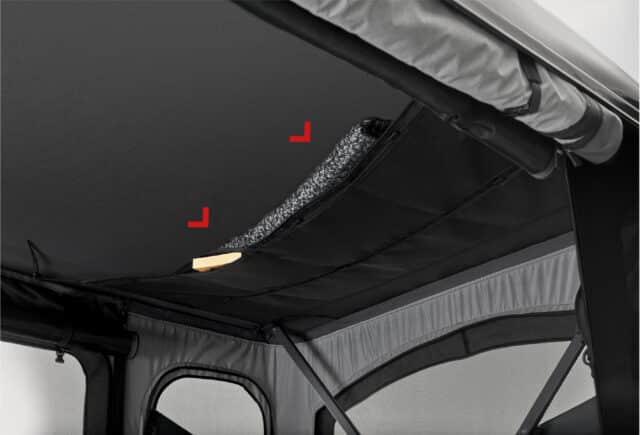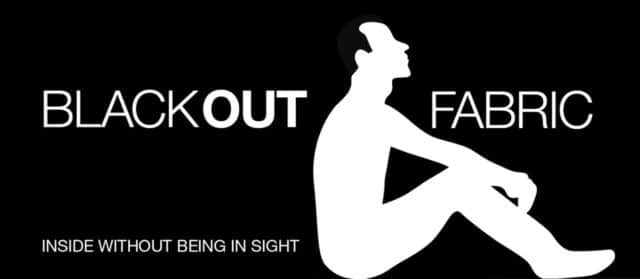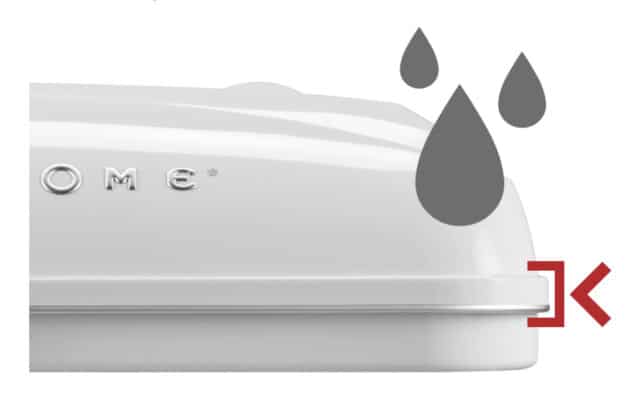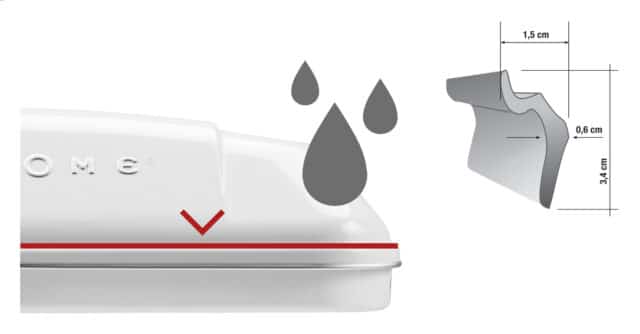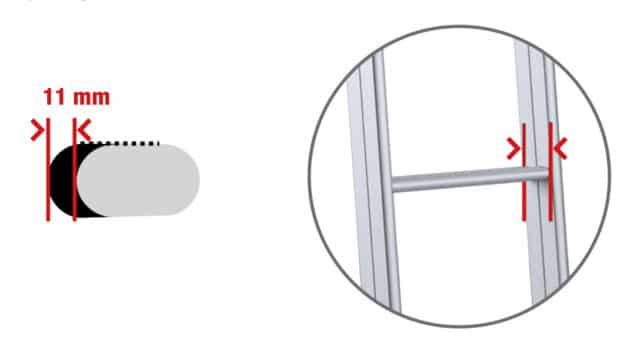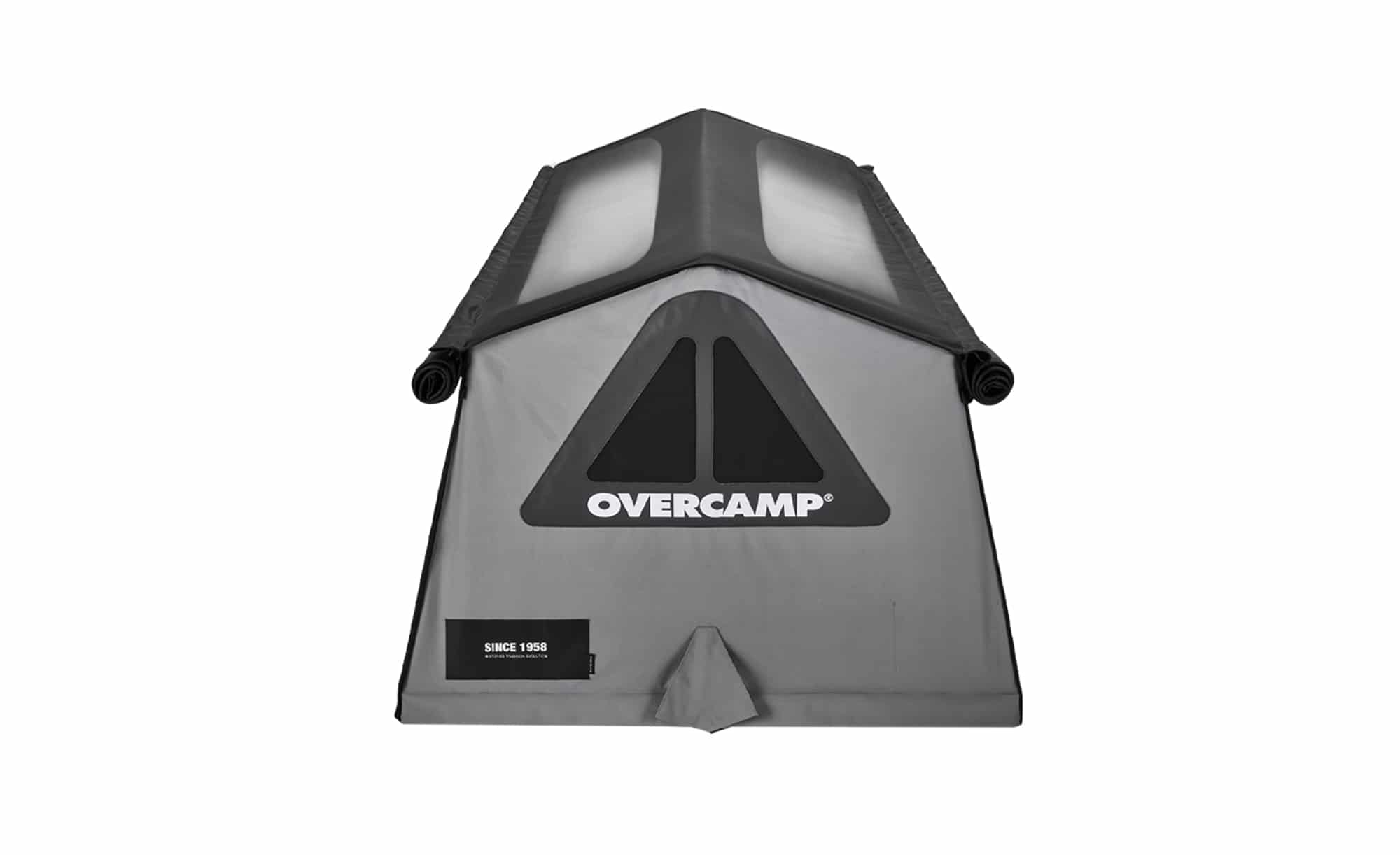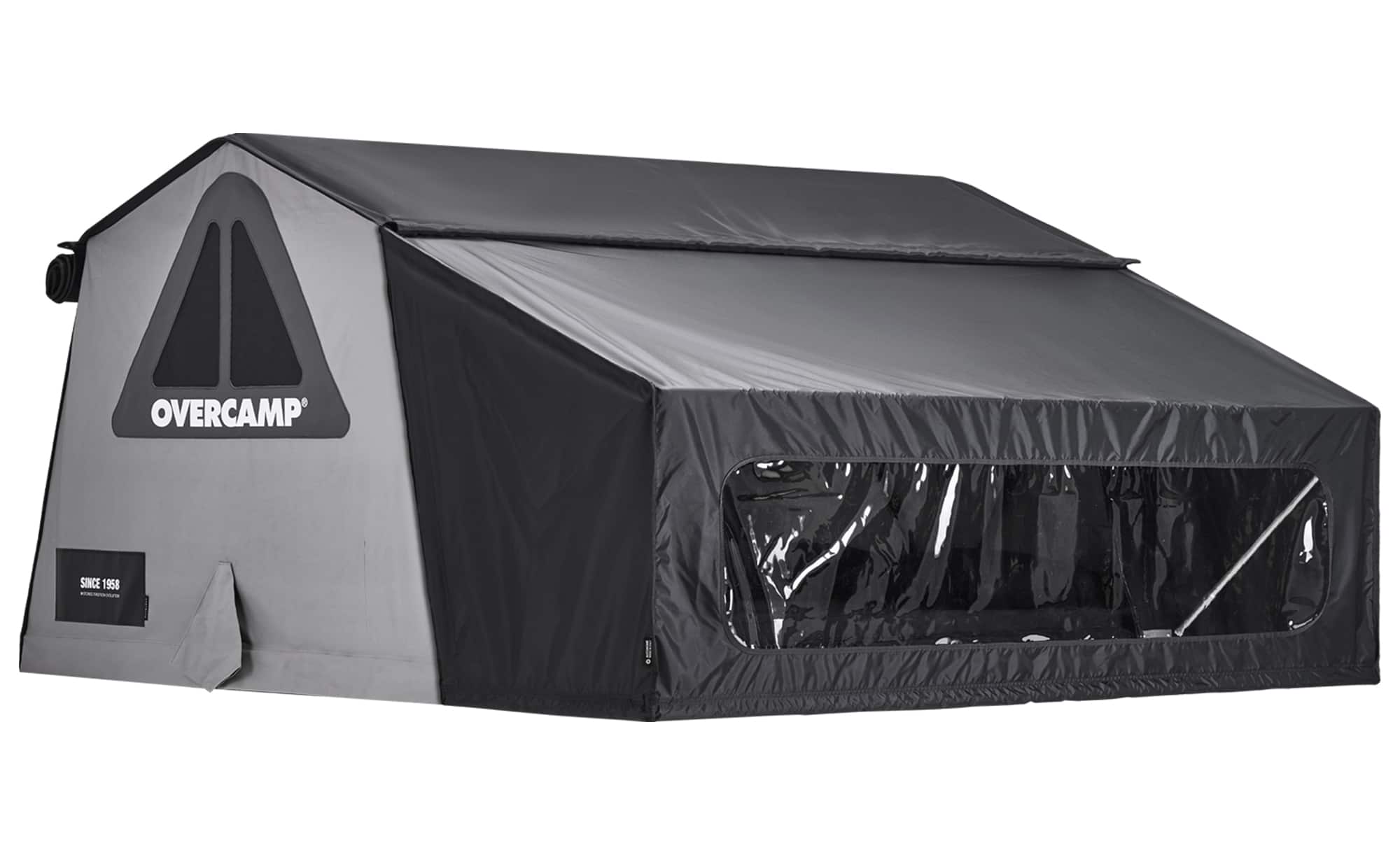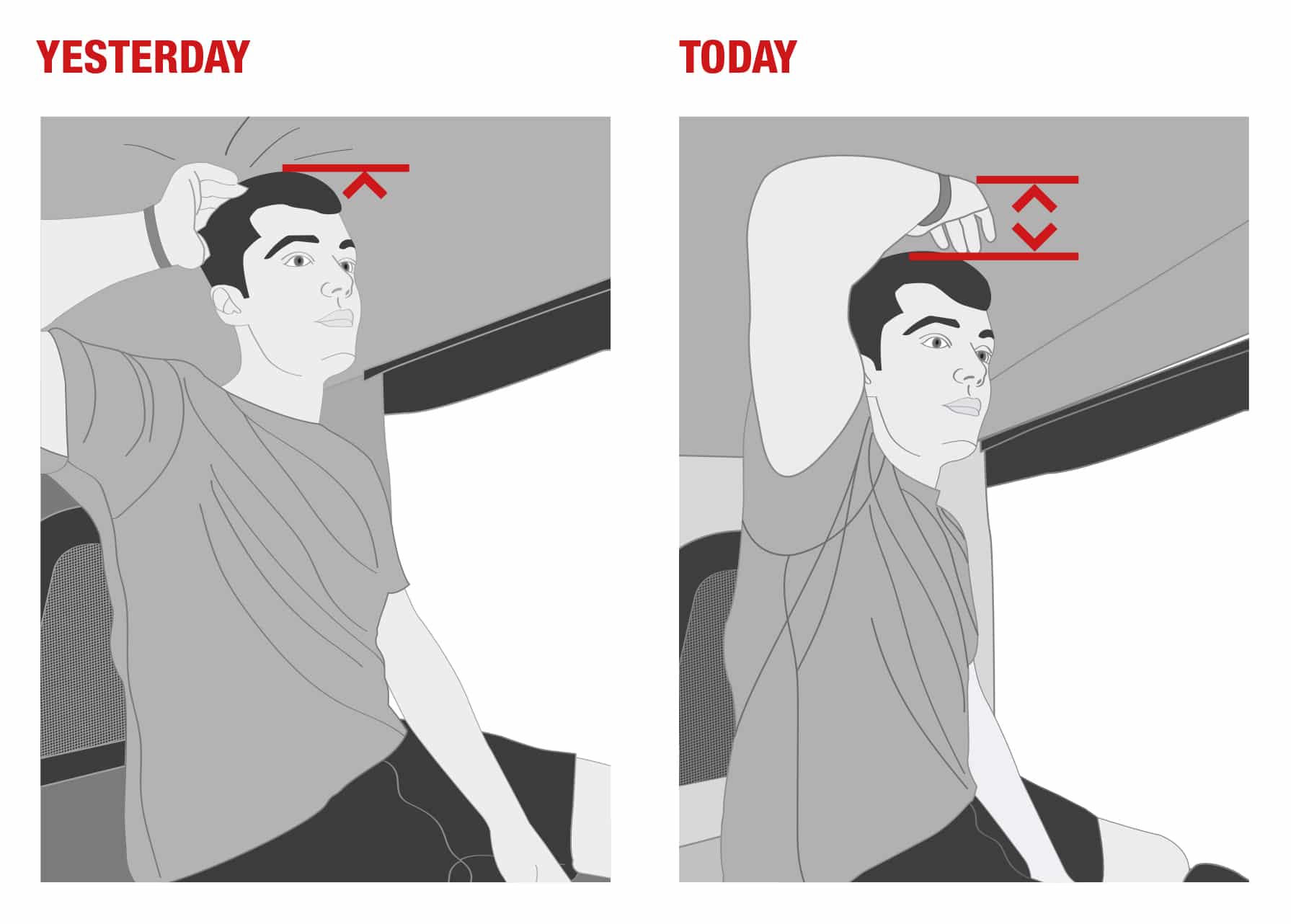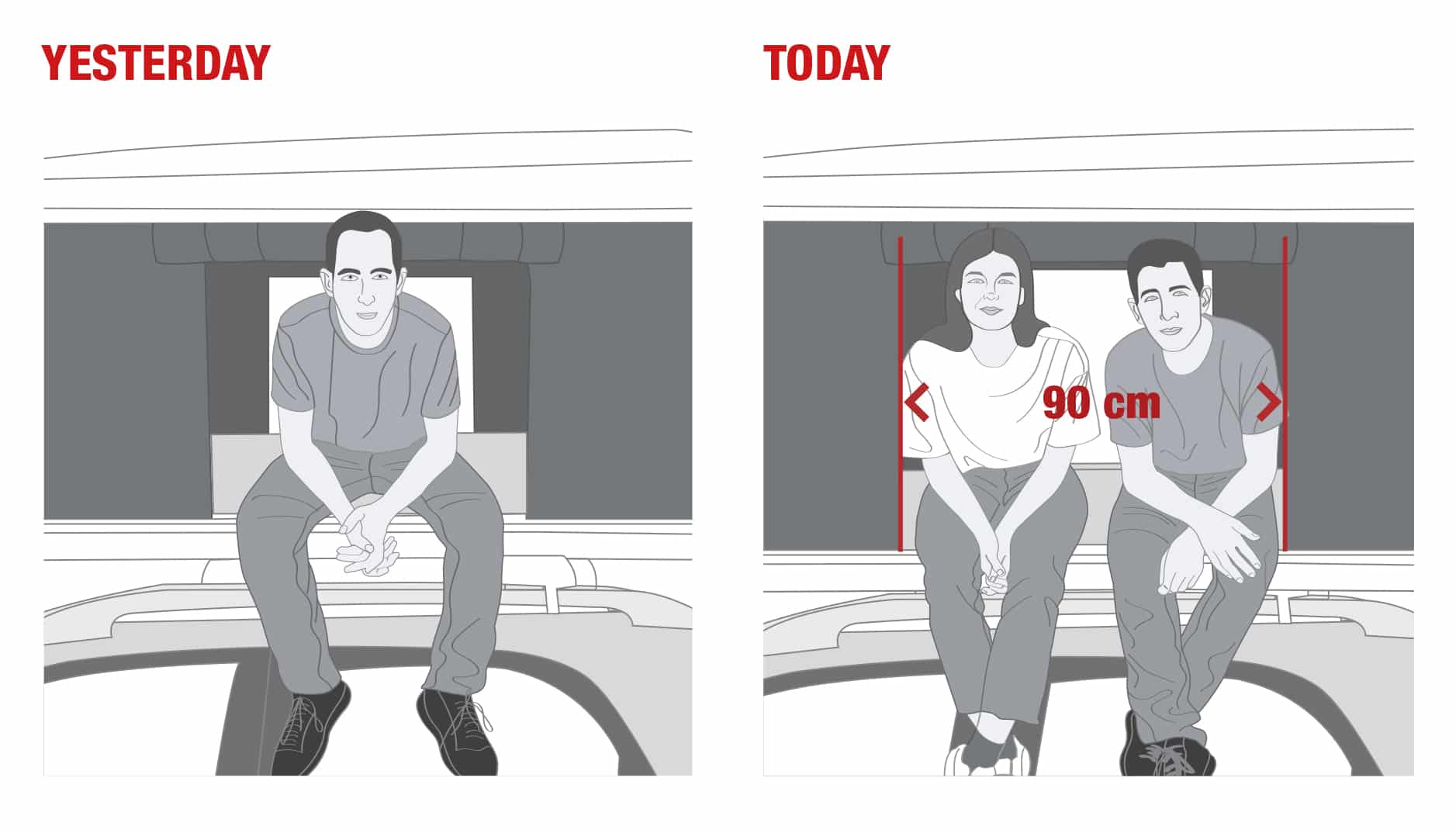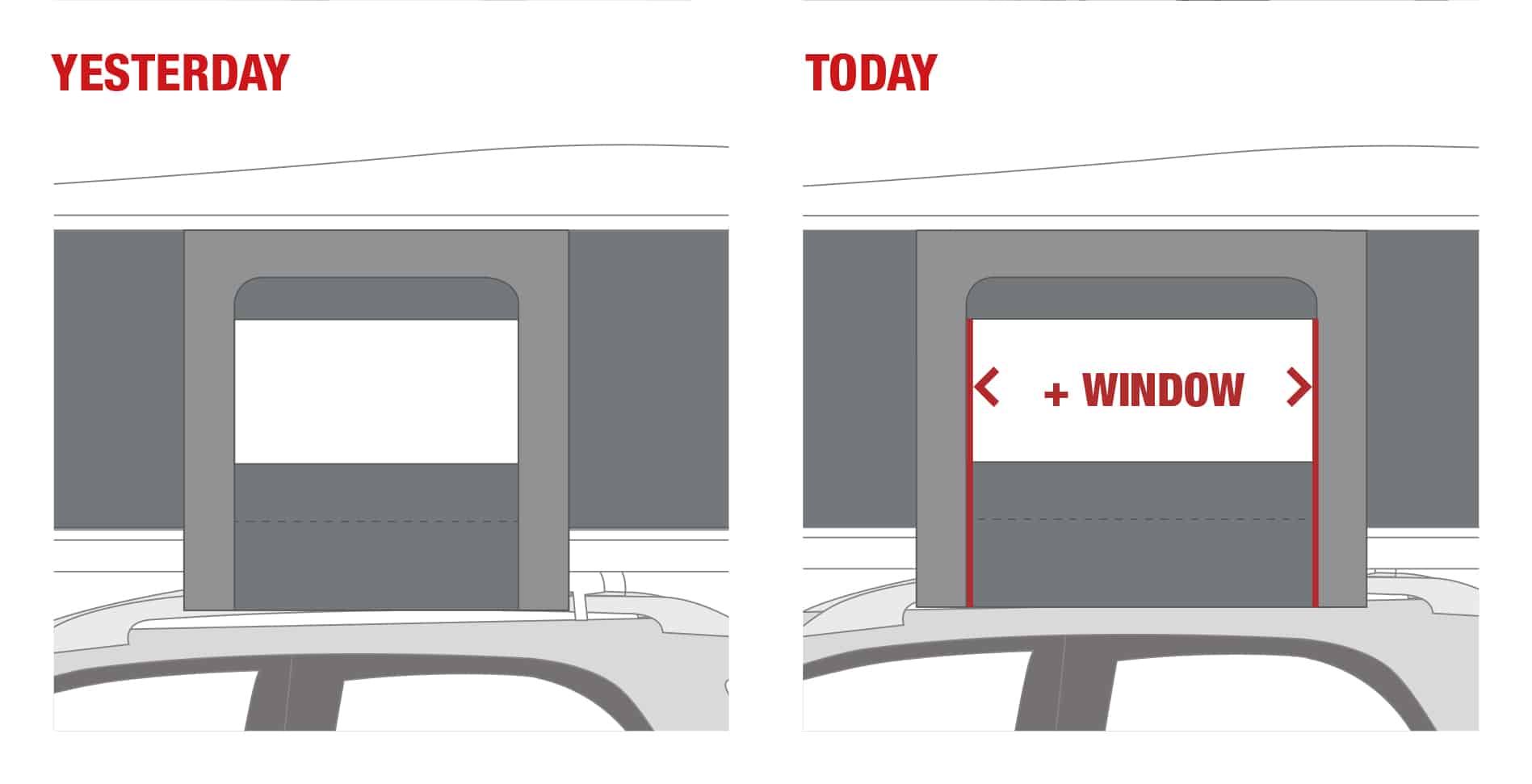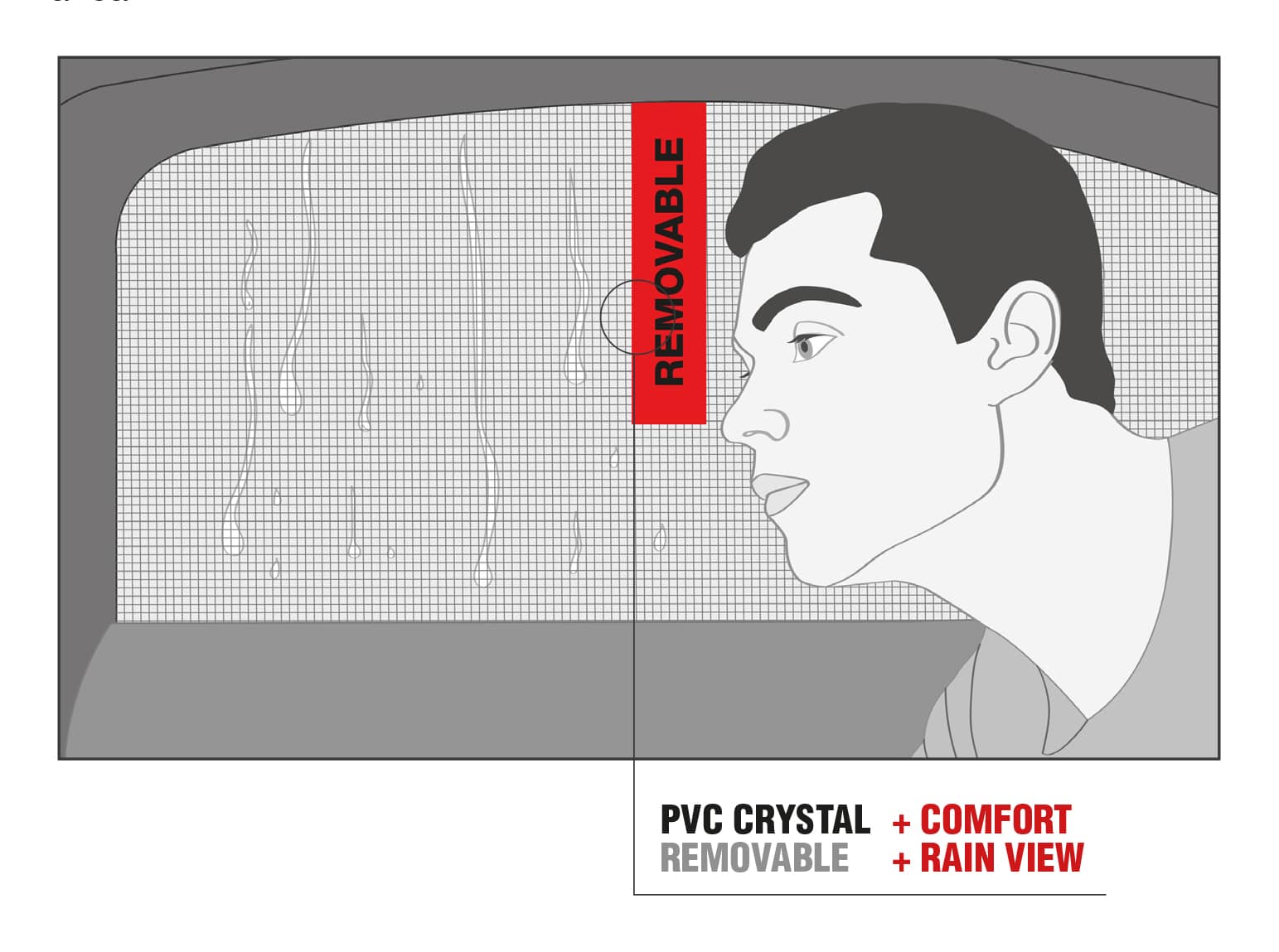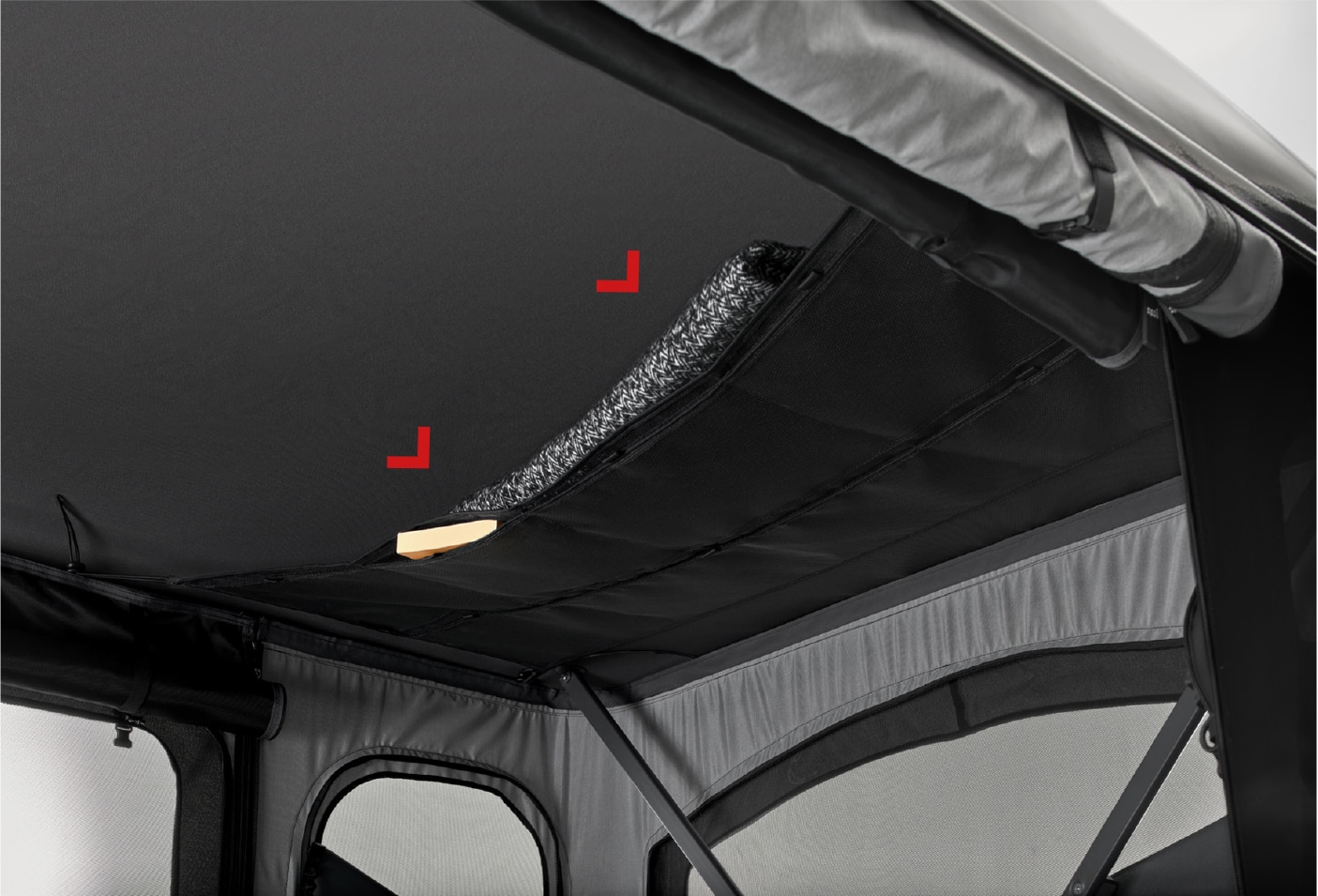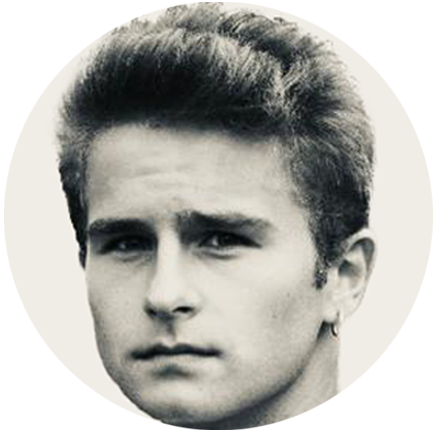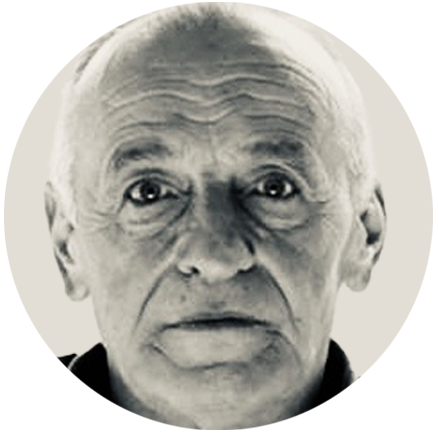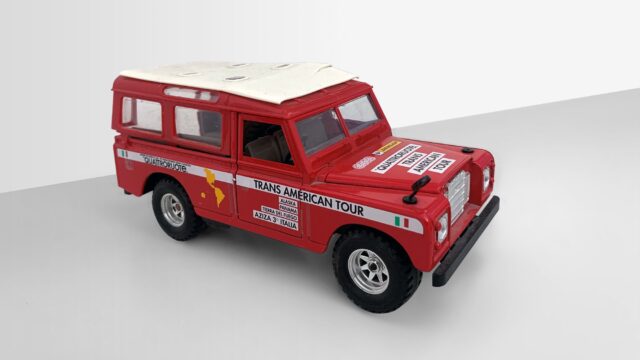THE CAR WITH A LOFT
To be truly an instrument of freedom, cars need to leave homes, hotels and restaurants far behind. The answer is a roof tent.
Our dear (in all senses) cars have a problem: they get us from A to B – with increasing difficulty in large cities and on holiday routes – but that’s about all. Not much for a vehicle that costs money to buy, to maintain and to run and is now small inside, often boxed in, and generally unable to meet essential human needs: to sleep, to eat and to live. Of course, it is not easy to think of a car that can do everything and is equally at home in narrow city streets at low speed and on the open road at high speed, during holidays. But if cars want to have a future and show that they can be used for more than just getting around (in marketing terms, if they want to provide consumers with numerous reasons to purchase them) it needs to reinvent itself and acquire multiple functions: not just to go somewhere, but to help with work and play, daily and during our free time. Compact SUVs go some way towards doing this. Not too big (but cities really should be the reign of public transport) and fairly spacious, with roofs that can transport bicycles and leisure equipment such as canoes and tents. How about sleeping? Well, with a roof tent you solve that problem too. As the giant auto maker BMW realized in relation to its iconic Mini brand, specifically for the Countryman, for which it asked the Italian manufacturer Autohome to produce an exclusive AirTop model. Hence the Mini Autohome Roof Tent, with the Mini livery perfectly matching the aggressive but refined look of the vehicle. A smart marketing idea, but also a more comprehensive understanding of the car. And outside Italy (where car making is quite at home) the idea is catching on: Toyota is now following suit – again with Autohome – for its new SUV, which can be fitted with the exclusive Columbus Variant Black Storm . Autohome is 100% Italian and the leading European manufacturer of roof tents, with a range of products for all kinds of vehicle and end user. Yet, most of its products end up abroad, where roof tents are highly appreciated: just visit the stands at the annual Caravan Salon in Düsseldorf to get the idea.
The reasons for success
We went to the company in Rivarolo Mantovano, where Giuseppe and Giacomo Fercodini welcomed us to a youthful business environment, characterized by enthusiasm. The work is based on attention to detail, research and innovation to make tents more comfortable and on optimizing production processes: a successful mixture of craftsmanship and industrial organization. Other companies, often on an exclusive basis, provide some parts which are assembled in Rivarolo. Each tent is unique, made by men not a production line. One of the next developments will be the move from conventional fiber glass shells to 4-layered ABS, a material that is odourless, lighter, smooth and needleless. Despite all this work in Italy, that is where roof tents are relatively unknown, and cars are just things to get you somewhere.
Pleased to meet you, Autohome
Autohome - many may remember its old trademark Zifer – is the direct descendent of Stogl Autocamping, the name of its founder with a product patented in Italy in 1958. Since then, roof tents have come a long way. Today, they are complete holiday and on-the-road leisure time accessories. Indeed, travelling without the need to look for a hotel gives a great sense of freedom. You can go where you want, when you want. Either on long journeys in Italy, Europe and the rest of the world, or for a short mountaineering expedition, for trekking, cycling or sailing, without needing to get up before dawn or return in the dead of night. Autohome tents can be fitted to all kinds of vehicle, although SUVs, station wagons, cans and off-road vehicles are the obvious choice, not so much because of their stability as their size, making them virtual campers. Some equipment can be stored in the shell, which cannot be opened without a handwheel (to prevent theft). There are different opening and closing mechanisms for the various models, all of them quick, nothing like an igloo tent. For a restful night’s sleep, the vehicle should be parked level, using wedges if necessary and a spirit level. If it is windy, choose a sheltered spot. For folding tents, park with the smaller surface facing the wind. Ladders provide access and, in some models, support. Inside, a high-density sponge mattress and pillows provide maximum comfort. Rucksacks can be used, or ordinary sheets and blankets. Doors and windows are fitted with mosquito nets and a 3-led Osram light is fitted. Numerous accessories make the tent even more versatile and comfortable: a hood for winter and cold countries, an independent veranda, a sunshade and pads for use without the vehicle.
Range
The Mantuan company provides models with three types of construction method, suitable for differing needs, and seven lines, a total of fourteen models, with capacity of two for the Small versions, 2+1 for Medium and 2+2 for Large.
MAGGIOLINA
is the best-known model, with a fiber glass or carbon fiber shell protecting the tent during the journey and acting as base and roof when used. Opening is by handwheel acting on the jointed aluminium poles, creating a rectangular space about 92 cm high. Various versions are available: Carbon Fiber, with light shells (Small: 46 kg, 4,749 euros; Medium: 49 kg, 5,529 euros); Airlander, with sleek aerodynamic design (Small: 56 kg, 2,459 euros; Medium: 60 kg, 2,599 euros; Large: 72 kg, 2,739 euros); Extreme, for off-road vehicles, tough and streamlined, with roof rack (Small: 65 kg, 2,809 euro,; Medium: 69 kg, 3,099 euros); Extreme Forest, with shell and green anti-reflective fabric suitable for birdwatching and nature photography; the doors have additional zips for partial opening to look out with binoculars or telephoto lenses (Small: 65 kg, 2,989 euros; Medium: 69 kg, 3,289 euros); Grand Tour, the most spacious, with a higher shell for extra baggage; with attachments for an outside carrier to transport large accessories such as canoes, surf boards or bicycles (Small: 58 kg, 2,719 euros; Medium: 62 kg, 2,899 euros; Large: 73 kg, 3,069 euros).
AIRTOP
rectangular like the Maggiolina and opening with gas spring like the Columbus: just remove the safety hooks and it opens instantaneously. Height when open 94 cm (Small: 54 kg, 2,699 euros; Medium: 59 kg, 2,889 euros).
COLUMBUS
has a unique roof zip one side, down to the base, and unfolds by gas spring. The maximum internal height is an astonishing150 cm and a carbon fiber shell is available (Small: 52 kg, 2,339 euros; Medium: 57 kg, 2,559 euros; Large: 64 kg, 2,789 euros). The Variant has two side doors and a large rear door; the shell is in carbon fiber (Small: 42 kg, 4,409 euros; Medium: 47 kg, 5,159 euros).
OVERCAMP
is a classic acrylic tent with multi-layered base, fan-type opening and two opposite-facing entrances. It is placed on the roof in a non-central position, leaving space for two tents and other baggage (Small: 50 kg, 1,639 euros; Medium: 54 kg, 1,829 euros).
OVERLAND
is similar to the above but designed for demanding globetrotters and use on rough terrain; it is cantilevered and has an access ladder of 225 cm with self-locking joint shortening to just 110 cm when closed under the base (Small: 45 kg, 2,139 euros; Medium: 54 kg, 2,399 euros; Large: 65 kg, 2,579 euros).
OVERZONE
is the largest in the range and can be fitted with a comfortable side fixture acting as entrance, kitchen and changing room (Small: 48 kg, 2,619 euros; Medium: 57 kg, 2,919 euros). Plus Air-Camping, the world-famous blue tent patented by Pino Dionisio in 1959, the trademark for which was taken over by Autohome some years ago (Small: 45 kg, 2,139 euros; Medium: 54 kg, 2,399 euros; Large: 65 kg, 2,579 euros). All models can be purchased online.

